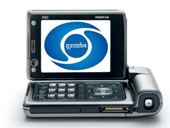 Using a disputed measure, TAM, the television research agency, has said Doordarshan not only commands the highest channel share compared to private networks but attracts a far greater number of viewers. It made a presentation to this effect before the information and braodcasting minister recently.
Using a disputed measure, TAM, the television research agency, has said Doordarshan not only commands the highest channel share compared to private networks but attracts a far greater number of viewers. It made a presentation to this effect before the information and braodcasting minister recently.
The TAM numbers have managed to establish the supremacy of Doordarshan over competing news channels like AajTak and India TV (the top others, also established by TAM data) and also entertainment channels like STAR Plus, Colors and Zee TV (the top Hindi general entertainment channels) in 2009.
However, Doordarshan and its two-dozen channels do not attract more than Rs 500 crore (Rs 5 billion) in advertising revenue in a year compared to nearly Rs 4,500 crore (Rs 45 billion) generated on private channels, including the news channels, movie channels and the general entertainment channels.
Here is how TAM established the supremacy of Doordarshan. Instead of using the week-on-week data, the TAM presentation was backed by statistics and data for 31 weeks, from January 2009 till the beginning of August. Therefore, while private channels are ranked according to weekly fluctuations in ratings, Doordarshan was 'established' as a top channel using the average ratings for these 31 weeks.
Taking this average data for 31 weeks in the 85 million cable homes, TAM shows DD1 was leading in the 8-8:30 pm time band with a channel share of 20 per cent and ahead of AajTak (18 per cent) and India TV (14 per cent). For private news channels, the prime time news bands are 8 pm to 9 pm, and 9 pm to 10 pm. No analysis was given on the comparative performance of the prime-time news band of private channels with DD1, a senior I&B official said.
Channel share simply means a channel-wise percentage allocation from a universe of 100 viewers who watched various news channels in a particular time band during a week. While DD has a 24-hour DD news channel, TAM did not use this channel to compare it with private TV news broadcasters. Instead, it has compared the news during peak time with DD1, which is a general channel showing news, movies, entertainment and current affairs and sports.
Media planners say the data for 31 weeks is not relevant for advertisers. "The 31-week data are of no use to us. We decide our strategy based on weekly data, as we can monitor the performance and the response of the programmes and whether it is working or not with audiences," said one.
To establish the supremacy of a musical talent show on DD1 called 'Jalsa', TAM data have compared its ratings on July 12, aired between 10:30 to 11 pm, with ratings of general entertainment shows aired on private channels between 8:30 pm and 11 pm on Zee TV, Colors, STAR Plus and others. Jalsa got a rating of 1.5 compared with its competitors in private channels, which got scores below one.
But media planners say it is not a fair comparison. "Ratings can only be compared for shows with a similar time band. At least, the shows have to start at the same time. We cannot compare an orange with an apple just because both are fruit," says a media planner.
Comparing the performance of the same movies on DD1 with those aired on Colors, STAR Plus, Zee Cinema, Sony and UTV Movies, among others, TAM data for Hindi-speaking markets show higher ratings than those aired on private channels. The DDI rating for, say, Jab We Met, was 3.5 TRP, compared an average rating of only 1 in Colors, which had shown the movie nine times.
The research shows that movies like Jab We Met, Bhool Bhulaiyan and Kabhi Alvida Na Kehna got four-five times higher television ratings on DD1 compared to the private channels. However, this was because all these blockbusters were aired only once on DD1 (between January 1 to August 8), as compared to up to nine times on private channels.
"Comparing the ratings of one telecast of a movie on DD1 with the average ratings of nine broadcasts of a film on a private channel is not fair," a media planner said.
Comparing sports events like the two cricket ODI series in January-February 2009 that were simulcast on both DD1 and Neo Cricket, TAM data show that both coverages attracted a similar number of viewers. While DD1 had an all-India reach of 68 million viewers, Neo Cricket had a reach of 70 million for the same series.






